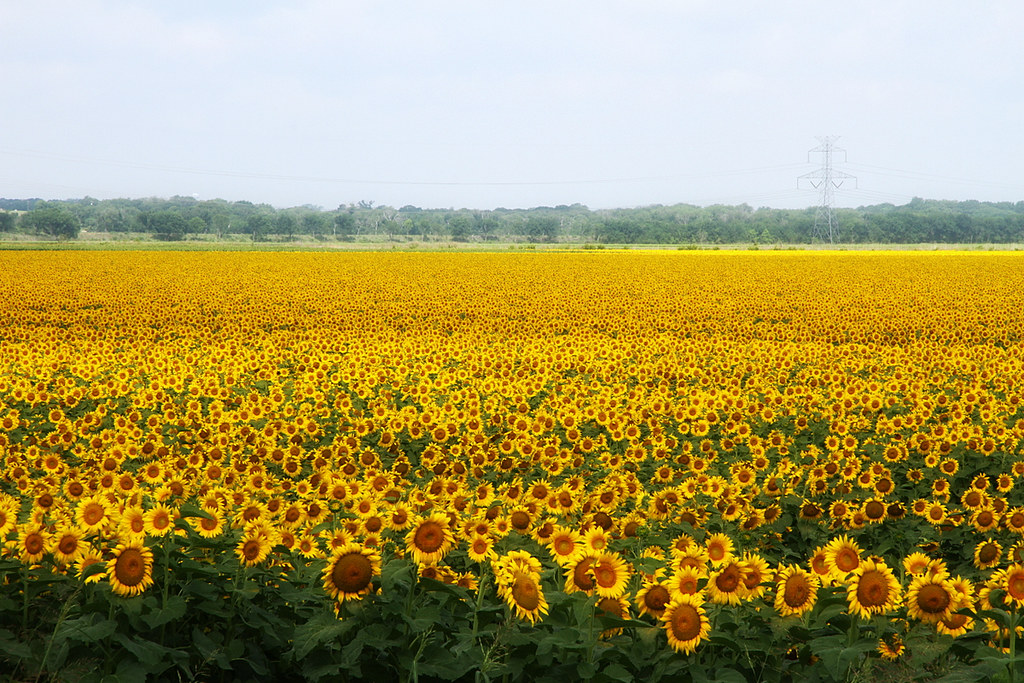By Lane Scher
Sunflowers are one of my favorite plants. I like them not just because they grow tall and make beautiful flowers but also because of their amazing tricks to get sunlight and attract pollinators. When I was in college, I got to work in a research lab that studied these behaviors in sunflowers, and let me tell you, we figured out some pretty cool things.
You’ve probably noticed potted plants in your window leaning towards the sunlight after a few days. That’s called phototropism, which means growing towards light. You don’t usually see a lot of phototropism in plants outside, because the sun moves across the sky so there’s not one clear direction they should grow. Sunflowers, on the other hand, are heliotropic. Heliotropism means that over the course of each day, the plant turns from east to west as the sun moves across the sky. And every night, the plants prepare for sunrise by turning their heads back to face east. Our research group found that phototropism helps the sunflowers grow–when heliotropism was reduced by tying the stem to a solid support, the plants didn’t grow as much.
But once the flower starts to open, the sun-tracking stops. Without fail, every single sunflower faces east once it opens, and we wanted to know why. To figure out why, we grew sunflowers in pots, and just before the flowers opened, we turned half to face west. We figured out that flowers that faced east warmed up more quickly in the mornings, and their warmth attracted more pollinators. We even found that when we warmed the west-facing flowers with heaters, they attracted as many pollinators as the east-facing flowers. So it wasn’t just the direction of the flower that made the difference, but the fact that they were warmer! Because sunflowers that are visited by more pollinators make more seeds, natural selection has driven all sunflowers to face east.
We usually only think about animals moving to get resources like food and water. But sunflowers are one of many plants that have unique behaviors to get their resources. Next time you see a sunflower, see if you can spot these tricks!
Edited by Elise Hickman and Rachel Battaglia

